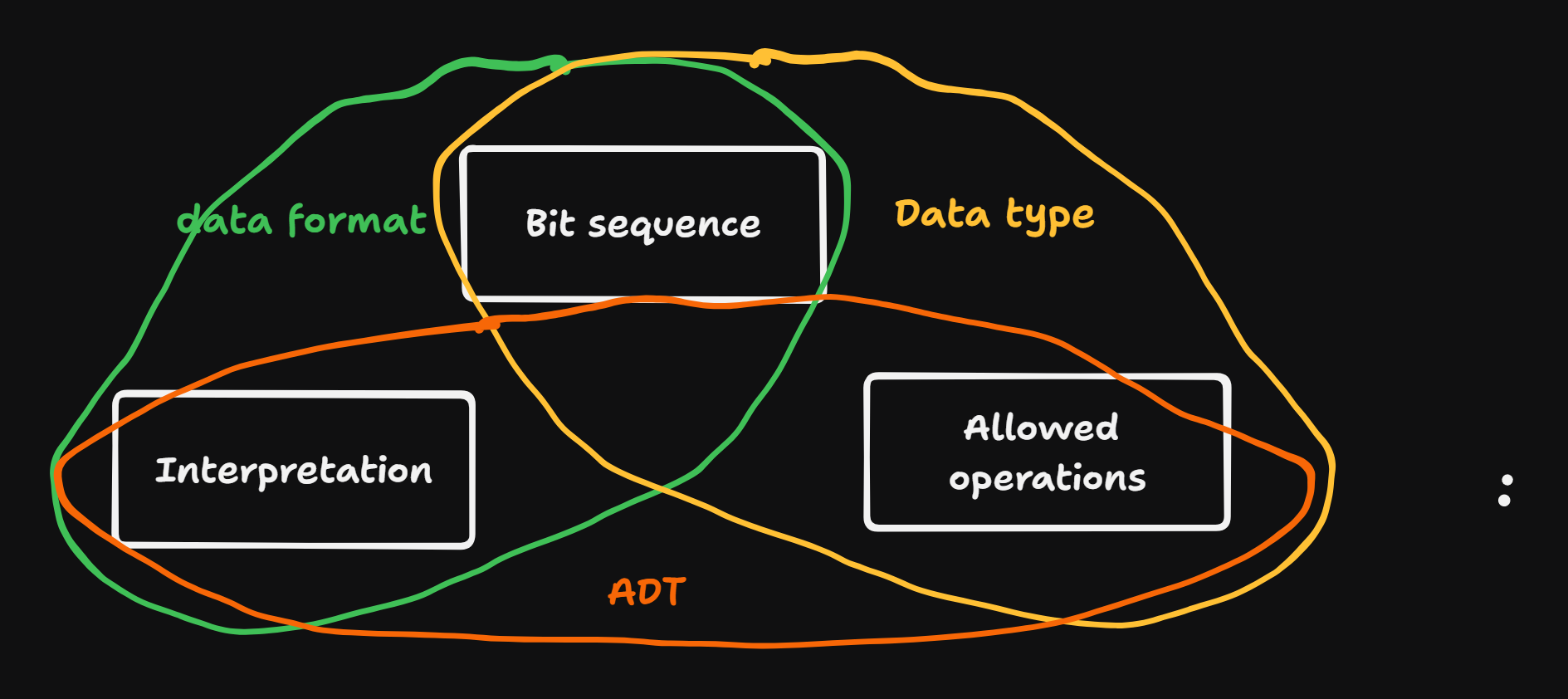Week 1
VL 1 - 15.04.25
- Heico: Rundmails, Pruefungen
- MaMPF: VL Skript & Videos, Uebungen
- Discord: Fragen, Teamfindung
- Muesli: Uebungspunkte
- Algorithms and programming with python (python crashcourse next week)
- website
lecture notes:
Algorithms and Data Structures
Algorithmus:
- loest eint bestimmtes (wohldefiniertes) Problem - “Spezifikation”
- loest das Problem in endlich vielen Schritten - “Komplexitaetstheorie”
- Alle Schritte sind elementar (Bekannte einfache Subalgorithmen)
Problem - Spezifikation:
- formale Beschreibung der Aufgabe
- enthaelt nicht die Loesung
Vorbedingugen: Notwendiger Zustand der “Welt”, damit der Algorithmus andwendbar ist. (Anforderungen and die Eingaben, evts, auch andere Umbegung)
Nachbedingen: Zustand der “Welt” am Ende des Algoirhtmus.
Bsp: Quadratwurzel \(y = \sqrt{x}\)
- Vorbedingung: \(x \in \mathbb{N}\), oder \(x \in \mathbb{R}^{\geq 0}\) oder \(x \in \mathbb{R}\), if \(y \in \mathbb{C}\)
- Nachbedingung: \(y \cdot y == x\), falls Vorbedingung erfuellt, anderfalls, d.h. \(x \notin \mathbb{R}\), or \(x < 0\), dann Fehlermeldung:
- \(x \in \texttt{string}\): Type error
- \(x < 0\): Value error
Elementare Schritte:
- pragmatische Definition: alles, was die Hardware, Programmierscprahe & Standartbibliothek schoin anbietet.
- formale Definition: Theoretische informatik - spezifikation Elementarer Operationen.
- Beispiel aus der Geometrie: Konstruktionen mit Zirkel und Lineal
- Elementare Operationen:
- defniere inen Punkt: (a. beliebig, b. als Schnittpunkt)
- mit Zirkel Abstand zwischen zwei Punkte abgleichen
- mit Zirkel einen Kres um einen geg. Punkt schneiden
- Radius beliebig
- aus 2)
- Mit Lineal Gerade durch zwei Punkte zeichnen.
- Elementare Operationen:
- Beispiel aus der Geometrie: Konstruktionen mit Zirkel und Lineal
Theoretische Informatik:
- Ziel der Theoretischen Informatik: mit moeglischst wenig Regeln (Elementare op.) moeglichst viele Algorithmen.
- \(\lambda\)-Calculus
- Recursive Functions Theory
- Turing Machine Computability
- While-computability
- Ueberraschendes Theorem der Theoretischen Informatik: Die Menge der realisierbaren Algorithmen ist gleich bei allen Systemen (berechenbare Funktionen)
- Church-Turing These: Es gibt kein maechtigeres Regelsystemen (model of computability).
- while-programme:
- addition einer Konstante
- substraktion einer Konstante
- nacheinander Ausfuehrung zwei Programme (Anweisungen)
- while-schleife
VL 2 - 17.04.25
Minimal set of elementary operations
while-programs:
set of operations:
accesing a memory cell, read / write:
X[i]adding a constant \(c\) to a memory cell and storing the result in an arbitary cell:
X[j] := X[i] + csubstracting a constant \(c\) from a memory cell:
X[j] := X[i] - ccomposition of programs: \(P\), \(Q\) programs, then \(P;Q\) is a program
while loop:
while x[i] != 0 do P // an arbitrary Program donein this definition such a while program is valid if x[i] eventually becomes 0. (otherwise, infinite loop => no algorithm)
theorem: with these Elementary operations, all Turing-computable functions can be computed.
example: addition of two cells
precondition:
X[j] >= 0poscondition:
X[i]' == X[i] + X[j]implementation:
read(X[i]); read(X[j]); // X[j] >= 0 && X[i] + X[j] == X + Y while X[j] > 0 do X[j] = X[j] - 1; X[i] = X[i] + 1 done // X[j] == 0
Around 1400 there was a disagreement about elementary operations. Two camps: Abacus-oriented vs Algorithm-oriented
- Abacus-oriented: Roman numerals + abacus operations. (Abacus operations were extremely fast with roman numbers)
- Algorithm-oriented: how to compute with indian number, pen and paper - based on the book of Al Quarismi.
1500 Adam Ries: “Rechnen auf der Federn und Linien” (Pen and Abacus)
Heute: pragmatic definition of elementary operations based on the capabilities of the CPU, or on the programming language level the basic operations of the programming language.
Data Structures
Definition: Storing data in a way that can be found easily and interpreted correctly.
Example: Consider sequence of bits: 1101,0110,0110,1100. The ‘meaning’ of this sequence depends on how
it is interpreted:
- interpretation as a positive binary number.
- interpretation as a binary integer => 2s complement.
- interpreted as a sequence of 8-bit characters:
- imterpreted as a floating point number according to the IEEE standard:
S | EEEEE | MMMMMMMMMM
main point: same symbol can be interpreted in various ways, depending on the system.
- programming languages: variables have associated types and the compiler or the interpreter determines what type it is and interprets this accordingly.
- Files:
- ending of the file
.jpg - magic number in file”: 255 216 255
- type standards for communication and Operating system.
- ending of the file
Data-structure Triangle

ADT: abstract data type = no implementation is given, no bit sequence is defined. Supported operations and range of values is defined.